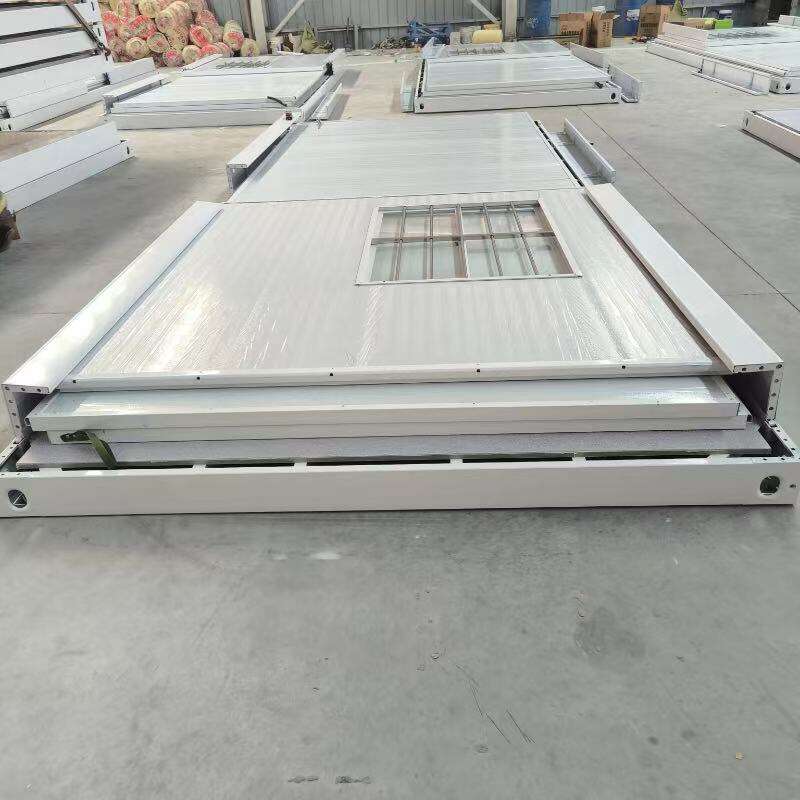In the ever-evolving world of furniture design, materials play a crucial role in determining both aesthetics and functionality. Among the innovative materials transforming the industry, cellular board has emerged as a game-changing solution that combines strength, sustainability, and versatility. This revolutionary material has redefined how designers and manufacturers approach furniture creation, offering unprecedented possibilities for both residential and commercial applications.
One of the most remarkable characteristics of cellular board is its exceptional strength-to-weight ratio. The unique honeycomb structure sandwiched between solid surface layers creates a material that's incredibly sturdy yet surprisingly lightweight. This engineering marvel allows furniture designers to create pieces that are both durable and easy to move, making cellular board particularly valuable for modern living spaces where flexibility is essential.
The internal structure of cellular board distributes weight and pressure evenly across its surface, preventing warping and maintaining structural integrity over time. This makes it an ideal choice for large furniture pieces like wardrobes, tables, and cabinet systems that need to maintain their shape while supporting significant weight.
Unlike solid wood, which can expand and contract with changes in humidity and temperature, cellular board maintains exceptional dimensional stability. This resistance to environmental fluctuations ensures that furniture pieces retain their precise dimensions and structural integrity throughout their lifetime. The stable nature of cellular board also means less maintenance and fewer warranty claims for manufacturers.
The material's dimensional stability makes it particularly valuable for precision-engineered furniture where exact measurements are crucial. From fitted wardrobes to modular office systems, cellular board provides the reliability needed for precise installations and long-term performance.
Cellular board offers an impressive range of finishing possibilities that can satisfy diverse design requirements. The material can be covered with various surface materials including veneers, laminates, and decorative papers, allowing designers to achieve any desired aesthetic. This versatility enables the creation of furniture that can complement any interior style, from minimalist modern to traditional classic.
The smooth, uniform surface of cellular board provides an excellent substrate for finishing materials, ensuring a flawless final appearance. Whether the design calls for a high-gloss finish or a textured wood grain effect, cellular board delivers consistent, professional results.
The edges of cellular board can be finished in numerous ways, offering designers creative freedom in their furniture pieces. From simple edge banding to more complex profiles, the material allows for various edge treatments that can enhance the overall design aesthetic. This flexibility in edge finishing helps create furniture with unique character and visual interest.
Modern edge-finishing technologies have made it possible to achieve seamless transitions between surfaces, creating clean lines and sophisticated details that elevate the furniture's appearance. These finishing options contribute to the material's ability to meet high-end design specifications.

Cellular board represents a significant advancement in sustainable furniture manufacturing. Its construction requires less raw material compared to solid wood or particleboard, making it an environmentally responsible choice. The honeycomb core structure optimizes material usage while maintaining structural integrity, resulting in furniture that's both eco-friendly and high-performing.
The manufacturing process of cellular board also generates minimal waste, as the honeycomb structure can be produced from recycled paper products. This efficient use of resources helps furniture manufacturers reduce their environmental footprint while meeting growing consumer demand for sustainable products.
The durability and longevity of cellular board furniture contribute to its environmental benefits. Because pieces made with this material maintain their structural integrity over time, they need to be replaced less frequently, reducing the overall environmental impact of furniture consumption. Additionally, many cellular board products can be recycled at the end of their life cycle.
The lightweight nature of cellular board also reduces transportation-related carbon emissions, as more pieces can be shipped in a single load compared to traditional materials. This efficiency in logistics contributes to a smaller carbon footprint across the entire supply chain.
The manufacturing process for cellular board furniture offers significant cost advantages compared to traditional materials. The lightweight nature of the material reduces machinery wear and energy consumption during production, leading to lower manufacturing costs. Additionally, the material's consistency and stability result in fewer rejected pieces and higher production efficiency.
The ability to automate many aspects of cellular board furniture production further enhances cost-effectiveness. Modern manufacturing techniques can be applied more easily to cellular board than to natural wood, resulting in faster production times and reduced labor costs.
While the initial cost of cellular board may be comparable to other materials, its durability and low maintenance requirements make it a cost-effective choice over the long term. Furniture made with cellular board maintains its appearance and structural integrity, reducing replacement and repair costs for both manufacturers and end-users.
The material's resistance to damage and wear ensures that furniture pieces retain their value over time, making them a smart investment for commercial and residential applications alike. This longevity contributes to lower lifecycle costs and better return on investment.
Cellular board features a unique honeycomb core structure sandwiched between surface layers, providing exceptional strength while remaining lightweight. This construction method offers superior stability and versatility compared to solid wood or traditional engineered materials.
Furniture made with cellular board is highly durable due to its stable construction and resistance to environmental factors. The material maintains its structural integrity over time and is less susceptible to warping or damage compared to traditional materials.
Yes, cellular board furniture is considered environmentally friendly due to its efficient use of materials, potential for recycled content, and reduced transportation emissions. The material's durability also contributes to sustainability by extending the furniture's lifespan.